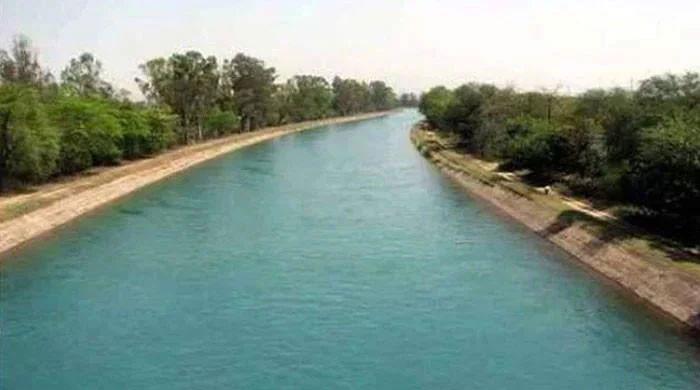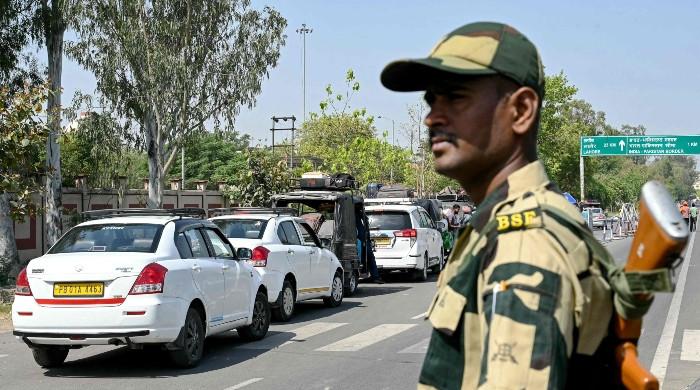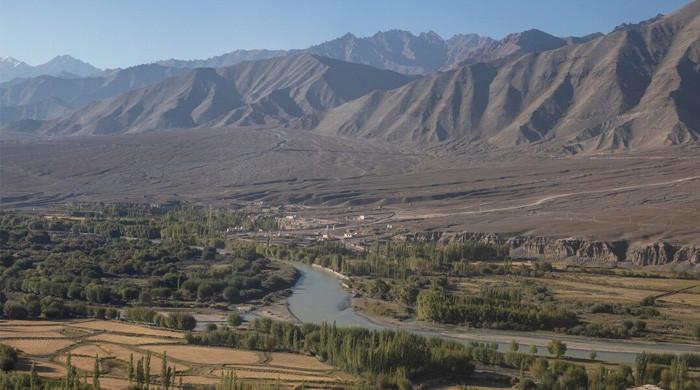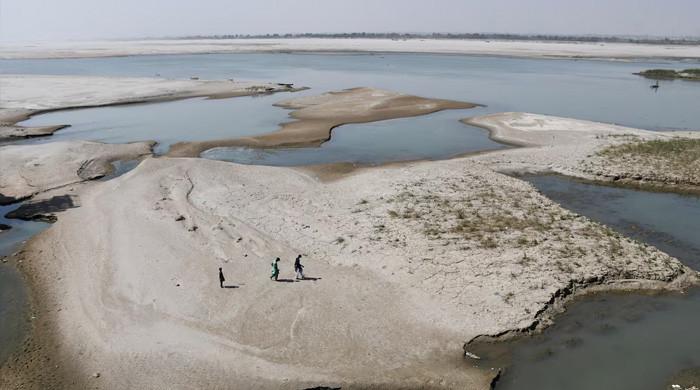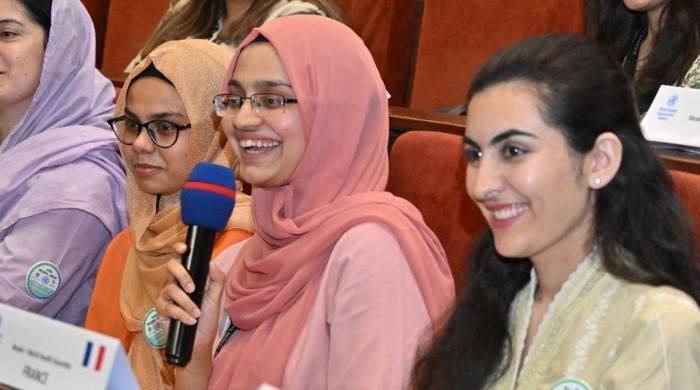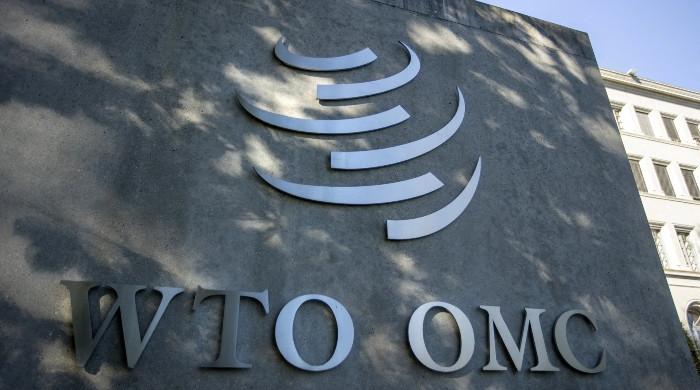2018 elections: Are MMA’s chances of winning in Khyber Pakhtunkhwa overrated?
MMA a religious parties alliance, raise hands at a rally on May 13 in Lahore - AFP
The revived Islamic alliance, Muttahida Majlis-i-Amal , prematurely launched its 2018 election...
May 14, 2018
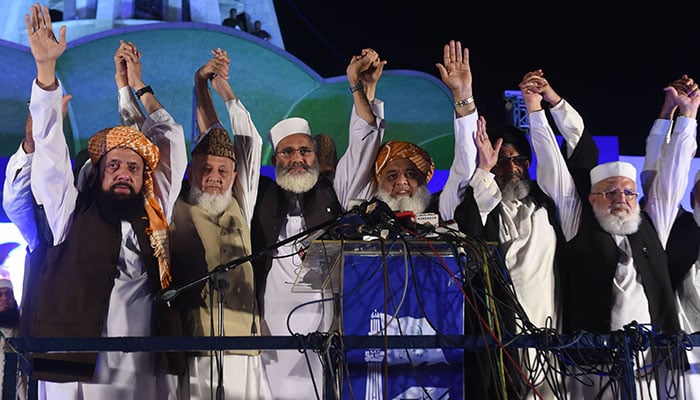
The revived Islamic alliance, Muttahida Majlis-i-Amal (MMA), prematurely launched its 2018 election campaign by recently holding its first joint public meeting in Khyber Pakhtunkhwa’s second biggest city, Mardan.
It was natural for the MMA, an alliance of five religio-political parties that was revived in late 2017 after remaining defunct for about a decade, to start its election campaign from Khyber Pakhtunkhwa. Its component parties have maintained a stable vote-bank in parts of the religiously conservative province in every election. Plus, the alliance is hoping to do well in the coming polls likely to be held in late July.
The decision to revive the MMA was taken in November last year, but it took the alliance another four months to overcome certain differences and elect its office-bearers. In keeping with expectations, Maulana Fazl-ur-Rahman was chosen as the president of the MMA and Liaqat Baloch as secretary general. As head of the Jamiat Ulema-i-Islami-Fazl (JUI-F), the biggest party in the alliance, Rahman was the obvious choice to lead the MMA. The second biggest party in the alliance is Jamaat-i-Islami and its nominee, Liaqat Baloch, was given the second most powerful position in the merger.
The other three parties in the alliance are Markazi Jamiat Ahle Hadith, which is headed by Professor Sajid Mir, the Jamiat Ulema-i-Pakistan (JUP-Noorani) led by Owais Noorani, and Tehrik-i-Islami, whose leader Allama Sajid Naqvi is a Shia religious scholar. They represent the different schools of thought ranging from the Deobandis to the Barelvis and Ahle Hadith to Shias.
One party missing from the revived MMA is Maulana Samiul Haq’s Jamiat Ulema-i-Islam-Sami (JUI-S), which has refused to rejoin the alliance despite repeated requests by the leaders of the other religio-political parties. Instead, the JUI-S has drifted towards Imran Khan’s Pakistan Tehreek-e-Insaf (PTI) and the two parties have discussed a possible electoral alliance for contesting the 2018 general election.
However, Haq was disappointed when he lost the election for the Senate in March when the PTI, hard pressed due to the suspect loyalties of several of its own lawmakers, declined to support his candidature. Lacking any solid vote-bank, the JUI-S doesn’t have many choices and would most probably stay close to the PTI in the hope of benefiting from its alliance in the polls. His seminary, Darul Uloom Haqqania, in Akora Khattak in Nowshera, has also received generous funding from the PTI government even though Imran Khan was criticized for supporting a madrassa that produced numerous Afghan and Pakistani Taliban, including some prominent militant figures.
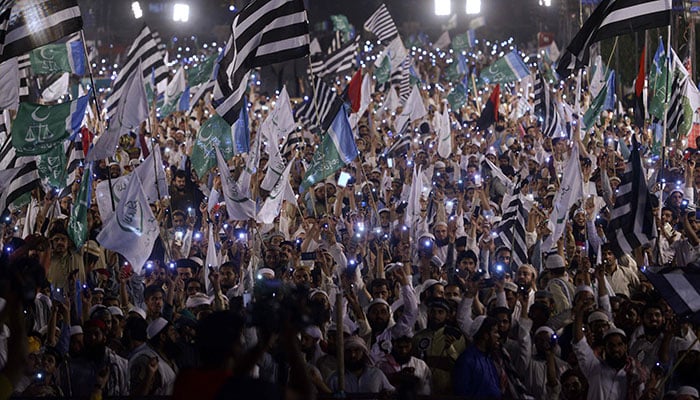
Originally formed in 2002 prior to the general election, the MMA was able to consolidate the Islamic vote and perform well at the polls. It won 60 seats in the National Assembly that year to become the largest opposition bloc. After which it emerged as the biggest party in the then-North-West Frontier Province (NWFP), renamed as Khyber Pakhtunkhwa in 2010, and formed the government. The MMA also got the biggest share in the provincial coalition government in Balochistan. However, the MMA started collapsing towards the end of its rule in the two provinces in 2007 due to differences among the component parties and the truncated alliance, sans Jamaat-i-Islami, which boycotted the polls, predictably performed poorly in the 2008 general election.
Despite its revival with an eye on the coming polls, the MMA won’t be able to repeat its 2002 electoral performance. In fact, the religio-political parties recorded their best electoral performance to-date in elections held since Pakistan’s independence in 1947 by polling 11 percent of the total vote in 2002. The anti-US sentiment represented by the MMA following the post-9/11 American invasion of Afghanistan and unification of the religious vote led to the landmark victory of the alliance. However, the situation is vastly different now and there are a number of parties vying for the rightist and religious vote. The Pakistan Muslim League-Nawaz (PML-N) is one and its arch-rival, Pakistan Tehreek-e-Insaf (PTI) is another. Then there are two new radical Islamic parties, the Barelvi-based Tehreek-e-Labaik Pakistan led by Khadim Hussain Rizvi that has already been registered and obtained a significant number of votes in the National Assembly by-elections, and the Milli Muslim League. Two other Islamic parties, Ahle Sunnat Wal Jamaat and Majlis Wahdat-e-Muslimeen too could snatch some of the Sunni and Shia votes, respectively, and affect the MMA’s electoral performance. Besides, the MMA remained in power in two provinces for five years after the 2002 election and its performance left much to be desired. Some of these factors would negatively impact the MMA’s prospects in the coming polls and disappoint the component parties that primarily got together to improve their dismal performance in the 2013 election.
- Yusufzai is the Resident Editor of The News International in Peshawar
Note: The views expressed by the author do not necessarily reflect the official policy or position of Geo News, The News or the Jang Group




